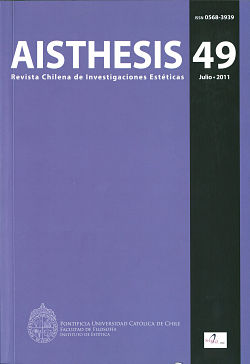A matter of time: Michael Fried and the time of modernist art
Main Article Content
Abstract
In the nineteenth century, seminal authors of Formalism, like Fiedler or Hildebrand, strictly compared the «purely visual» plastic arts to the discursive arts of verbal language, ruling out narrativity from plastic arts, which they dissociated from temporality — the formalist «principle of exclusion of time». Later on, «modernist» art critic Clement Greenberg claimed that instantaneousness, as opposed to duration, was the ideal modality for artistic experience. Art critic and historian Michael Fried did not share Greenberg’s position, but developed instead a discourse about time in plastic arts. In his early critical writings on abstract art of the 60’s, he deploys such notions as «visual time», while his later art-historical writings explore temporal modalities in pictorial representation. The apparent paradox between the key role Fried attributes to Manet and instantaneousness in the origins of modern art, and Fried’s own critique of the «literalist» hypostasis of duration in late avant-garde art, can be solved in the light of Fried’s vindication of the durative time of «the everyday». This allows us to understand the characteristic time modality of modern art and of the modern era, pointed in Fried’s notion of presentness.
Article Details

This work is licensed under a Creative Commons Attribution-NonCommercial-ShareAlike 4.0 International License.
All contents of this electronic edition are distributed under the Creative Commons license of "Attribución-shareAlike 4.0 Internacional" (CC-BY-SA). Any total or partial reproduction of the material must mention its origin.
The rights of academic works published in this publication belong to their authors., who grant to AISTHESIS: Revista Chilena de Investigaciones Estéticas the license for its use. The management of the permits and the authorization of the publication of the images (or of any material) that contains copyright and its consequent rights of reproduction in this publication is the sole responsibility of the authors of the articles
